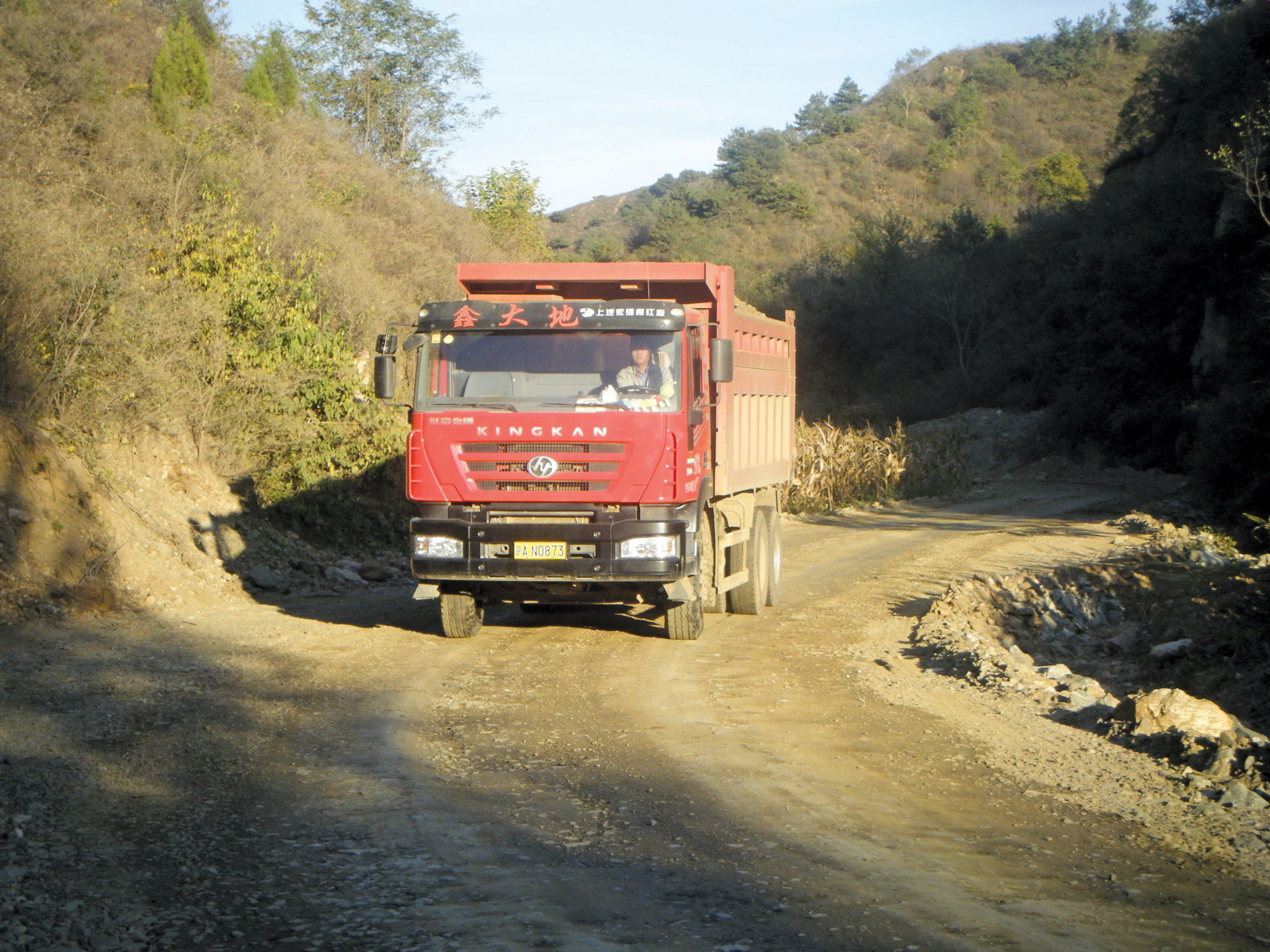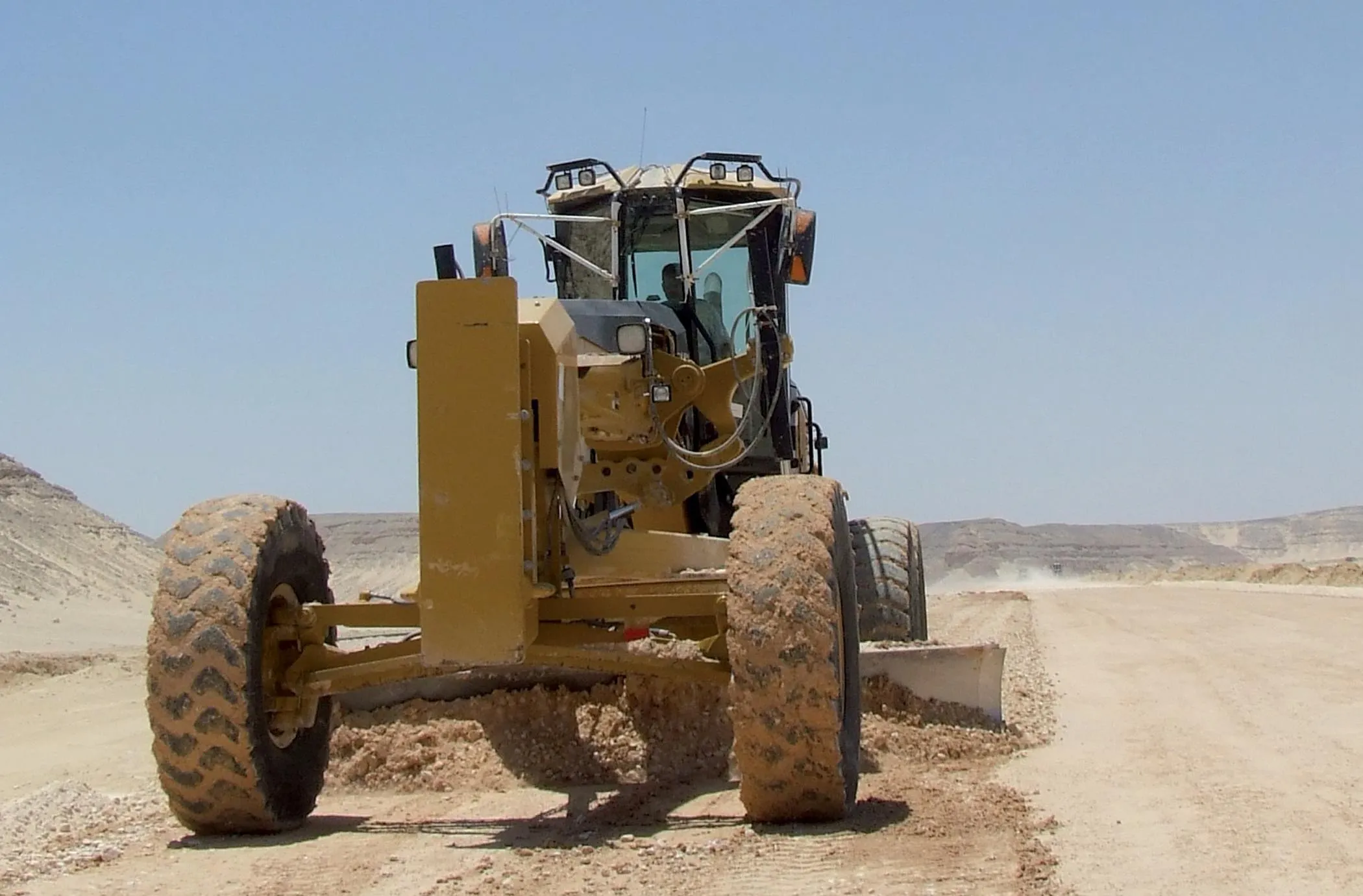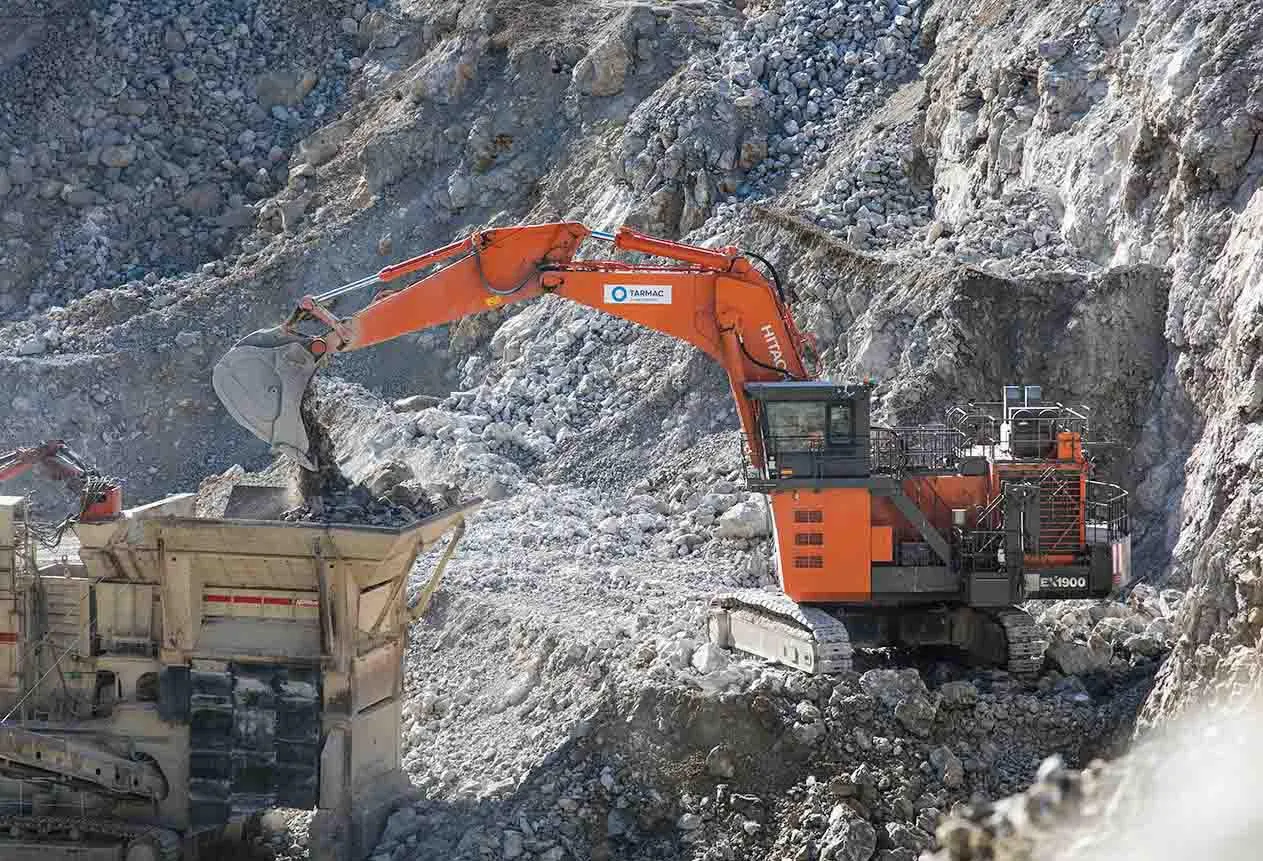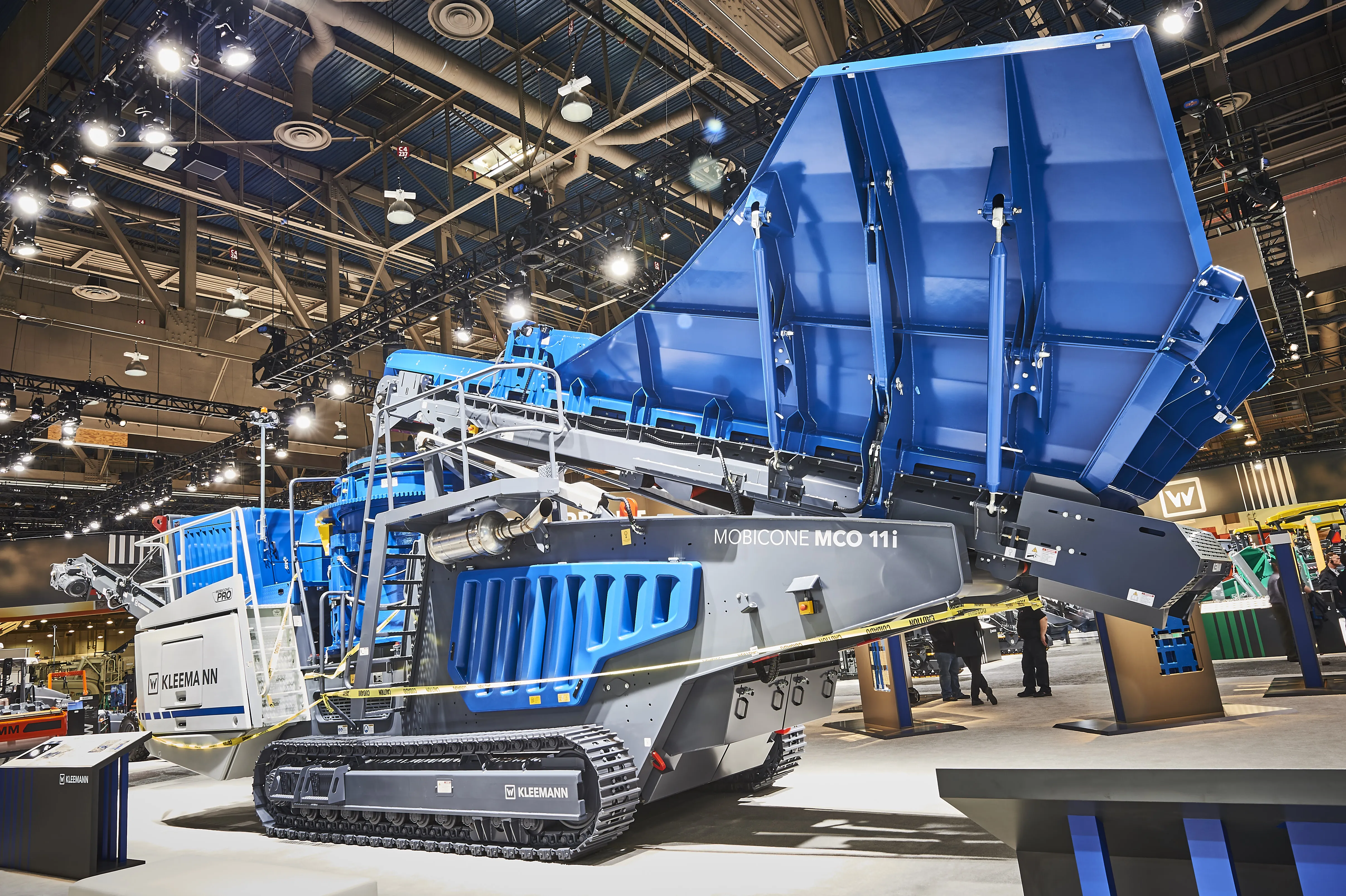Chinese quarry producer Beijing Xindadi Equipment Company is looking to increase the size of its Caterpillar machine fleet as part of its plan to increase output The company is based at Beijing Miyun Taishi Village and currently produces 1-1.5 million tonnes/year of limestone, which is used for general construction in the Beijing area. Zhang Guofeng is equipment manager for the firm and said, “Business is good because the market is not affected by the downturn.”
December 10, 2013
Read time: 4 mins

Chinese quarry producer Beijing Xindadi Equipment Company is looking to increase the size of its Caterpillar machine fleet as part of its Plan to increase output
The company is based at Beijing Miyun Taishi Village and currently produces 1-1.5 million tonnes/year of limestone, which is used for general construction in the Beijing area. Zhang Guofeng is equipment manager for the firm and said, “Business is good because the market is not affected by the downturn.”
This privately-owned firm bought its first178 Caterpillar excavator in 2005 and after having had 24 units from a competing manufacturer, is now looking to replace all of these with CAT excavators, with eight having already been sold. Reliability and strong service support have helped with the decision to make the move to a Caterpillar fleet. The company realised that investing in these more expensive machines made sense as cheaper units would be less reliable and not have the same service support, affecting profitability over the medium-long term.
The firm has two quarry sites, one having been operated since the company was established 12 years ago but it has also opened up a new site within the last few months to meet anticipated future demand for quarried limestone. This new operation uses primary winning with hydraulic breakers and in this respect it differs from the company’s other facility. The larger quarry relies mainly on conventional drilling and blasting methods for its product, although it also has used breakers for excavation. Primary winning with a breaker is still a comparatively new concept to the Chinese quarrying industry and the company is an innovator in the country in this respect.
Beijing Xindadi Equipment is currently using six Caterpillar excavators at its new quarry, one 346D, three 349Ds, a 385D and a 390D, although this looks likely to change as the operation grows and as the Caterpillar fleet is increased. The company has been keen to use premium brand machines at its operation as these offer greater productivity and reliability in the tough operating conditions and the higher purchase cost of the units is quickly offset by the greater uptime and output. The 385D is of note as it is equipped with an Indeco HP18000 hydraulic breaker, which carries out the primary winning duties while the other excavators are used for digging and truck loading duties. Productivity is high and the machines have proven reliable in this tough application, providing high availability.
Having a reliable machine for the production task of primary winning is crucial to this type of working, a fact of which the company is well aware and was another factor in the decision to switch to an all-Caterpillar excavator fleet. Guofeng said that the firm has a fleet of some 100 off-highway machines in all, with the Caterpillar units being maintained under a full service contract by the main dealer, Westrac.
The mode of operation means that the production flow is continuous with on/off highway trucks carrying the stone from the site to the crushing and screening facility, situated elsewhere. The trucks achieve around six haul cycles/day and the firm is using 20 units from its haulage fleet to transport the stone to the crushing and screening plant, where it is processed into the necessary size fractions. The haul road at the site is comparatively short and has a hard base, while the laden trucks travel downhill so these on/off highway haulers are able to cope with the application. Once they reach the asphalt road it is a fairly short distance to the crushing and screening facility where they can dump the rock and then return for the next load.
At the moment, the new quarry is still too small to make having an onsite crushing and screening facility viable, although this may change as the operation increases its output and the company may then opt to shift the necessary plant to the site. At present the use of mobile crushing and screening equipment is not widespread in China but as this firm is an innovator in the country’s quarry sector, it may also opt to lead the field in this respect. Installing mobile crushing and screening equipment at the site would eliminate the need to haul material elsewhere for processing and increase overall efficiency.
Demand is strong in the area for this good quality limestone, which is encouraging the firm to continue to its upscale output from the new site and Beijing Xindadi Equipment Company looks set to continue be an innovator in the country’s quarry sector.
The company is based at Beijing Miyun Taishi Village and currently produces 1-1.5 million tonnes/year of limestone, which is used for general construction in the Beijing area. Zhang Guofeng is equipment manager for the firm and said, “Business is good because the market is not affected by the downturn.”
This privately-owned firm bought its first
The firm has two quarry sites, one having been operated since the company was established 12 years ago but it has also opened up a new site within the last few months to meet anticipated future demand for quarried limestone. This new operation uses primary winning with hydraulic breakers and in this respect it differs from the company’s other facility. The larger quarry relies mainly on conventional drilling and blasting methods for its product, although it also has used breakers for excavation. Primary winning with a breaker is still a comparatively new concept to the Chinese quarrying industry and the company is an innovator in the country in this respect.
Beijing Xindadi Equipment is currently using six Caterpillar excavators at its new quarry, one 346D, three 349Ds, a 385D and a 390D, although this looks likely to change as the operation grows and as the Caterpillar fleet is increased. The company has been keen to use premium brand machines at its operation as these offer greater productivity and reliability in the tough operating conditions and the higher purchase cost of the units is quickly offset by the greater uptime and output. The 385D is of note as it is equipped with an Indeco HP18000 hydraulic breaker, which carries out the primary winning duties while the other excavators are used for digging and truck loading duties. Productivity is high and the machines have proven reliable in this tough application, providing high availability.
Having a reliable machine for the production task of primary winning is crucial to this type of working, a fact of which the company is well aware and was another factor in the decision to switch to an all-Caterpillar excavator fleet. Guofeng said that the firm has a fleet of some 100 off-highway machines in all, with the Caterpillar units being maintained under a full service contract by the main dealer, Westrac.
The mode of operation means that the production flow is continuous with on/off highway trucks carrying the stone from the site to the crushing and screening facility, situated elsewhere. The trucks achieve around six haul cycles/day and the firm is using 20 units from its haulage fleet to transport the stone to the crushing and screening plant, where it is processed into the necessary size fractions. The haul road at the site is comparatively short and has a hard base, while the laden trucks travel downhill so these on/off highway haulers are able to cope with the application. Once they reach the asphalt road it is a fairly short distance to the crushing and screening facility where they can dump the rock and then return for the next load.
At the moment, the new quarry is still too small to make having an onsite crushing and screening facility viable, although this may change as the operation increases its output and the company may then opt to shift the necessary plant to the site. At present the use of mobile crushing and screening equipment is not widespread in China but as this firm is an innovator in the country’s quarry sector, it may also opt to lead the field in this respect. Installing mobile crushing and screening equipment at the site would eliminate the need to haul material elsewhere for processing and increase overall efficiency.
Demand is strong in the area for this good quality limestone, which is encouraging the firm to continue to its upscale output from the new site and Beijing Xindadi Equipment Company looks set to continue be an innovator in the country’s quarry sector.









